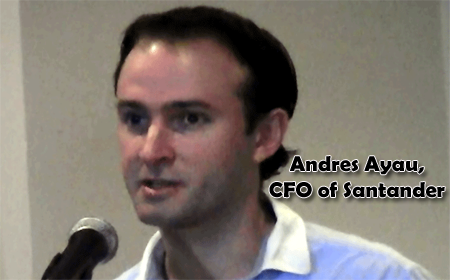BELIZE CITY, Fri. Feb. 12, 2016–Santander Sugar announced in a press conference this Friday morning that it has decided to pull back its application from the Belize Social Security Board (SSB) for US$6 million (BZ$12 million) in financing for its sugar enterprise in western Belize, because “the issue was politicized, and given a negative connotation;” but the company plans to return with a second application, said Andres Ayau, the company’s chief financial officer.
“We would like to leave the door open for the Social Security Board,” Ayau said, adding that the company wants to pursue another SSB loan for an additional investment round, for expansion of the project and the sugar cane fields for 50 million US dollars.
For the meanwhile, though, the US$6 million has been procured from an international lender. According to Ayau, Santander had already informed the SSB that they would turn to another source for the money.
He said that Santander hopes that they “can go beyond the politics and see that this is a safe and sound transaction that will provide a big benefit for the Social Security beneficiaries…”
The CFO said that the company’s current investment is US$150 million, with 60% coming from local and foreign lenders and a third from Belize banks.
It had previously been reported that the SSB’s inclusion in the syndicated loan agreement meant that US$56 million of US$96 million loan would have come from local lenders. Without the SSB portion, the arrangement would now be closer to a 50-50 arrangement for local and foreign participation in the syndicated loan agreement, on which the lenders would reportedly earn 7%.
Ayau said that under the syndicated loan arrangement, all lenders have the same standing and “no entity has priority over the other.” He said that the loan comprises 60% of total investment, while the other 40% is investor capital. By international standards, he said, that’s considered “a safe loan.”
We asked Ayau about the collateral which has been put to back the loan, and he told us that it includes all the assets, including lands, plant, and vehicles, with a total valuation of 160 million US dollars—security which he said also mitigates the risk of the loan.
According to Ayau, Santander turned to SSB for money after one of the lenders pulled out. He said that the bank had restructured itself and the new entity that was created could no longer lend to Belize because of restrictions by the regulator.
Whereas the Belize Chamber of Commerce and Industry (BCCI), the private sector agency which sits on the SSB board, supports the Santander loan, the National Trade Union Congress of Belize (NTUCB), does not. President of the NTUCB Marvin Mora had expressed concerns over the risk level of the loan.
“I don’t want to compromise for a little [financial] return… We don’t know what the future holds for Santander, which is not an established company in Belize,” Mora said.
“If [Santander’s enterprise in Belize] fails, we will have to contend with the repercussions,” he added.
He underscored the fact that the SSB fund is there to protect workers: “They, the SSB, look at the financial risk – our risk is not just financial but directly translates to not being able to pay benefits (such as sick benefits) and pensions. It’s a matter of life and death for us,” Mora said.
BCCI president, Arturo “Tux” Vasquez, had told Amandala that after having been satisfied during the due diligence phase that the Santander investment can repay the loan, the SSB must have considered it “safe” enough to proceed.
The Opposition People’s United Party issued a statement earlier this week, disapproving of the loan from SSB funds.
“On the basis of the limited information presently available, the PUP believes that this proposed loan is too risky and should not be made by SSB. The PUP stands in solidarity with the majority of Belizeans who oppose the loan of $12m to Green Tropics Limited. Whilst the project is beneficial to the Belizean economy, this loan from the SSB is not,” the Opposition release said.
In response to the concerns expressed over the viability of the investment, Ayau said that the investors, who come from Guatemala, Spain, the Dominican Republic, and the United States, have over 30 years of experience in the sugar industry. He added that Santander is the largest sugar cane producer in Guatemala, and they also produce palm oil.
As for their operations in Belize, the company hopes to begin grinding in about three weeks, if weather permits. The company does not go into full operation until next year, when it hopes to grind 800,000 tons of sugar cane to produce sugar and molasses, mostly for the European market, for which, he said, they already have firm offers. Santander also plans to supply energy to the national electricity grid of Belize.
Ayau said that within the next three years they hope to expand operations to the level of the Belize Sugar Industries (BSI) in northern Belize.
He told the press that the Santander Group which owns Santander Sugar in Belize and Guatemala is in no way affiliated with the internationally renowned Santander Bank, which also identifies its parent company as “Santander Group.” He said that Santander Sugar chose the name because some of their investors are from the Santander region of Spain.

